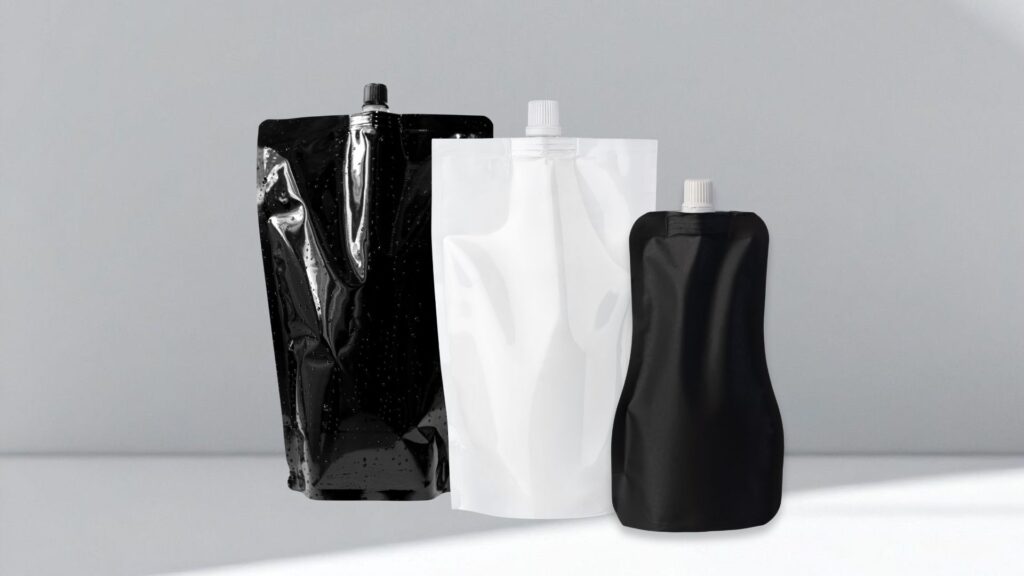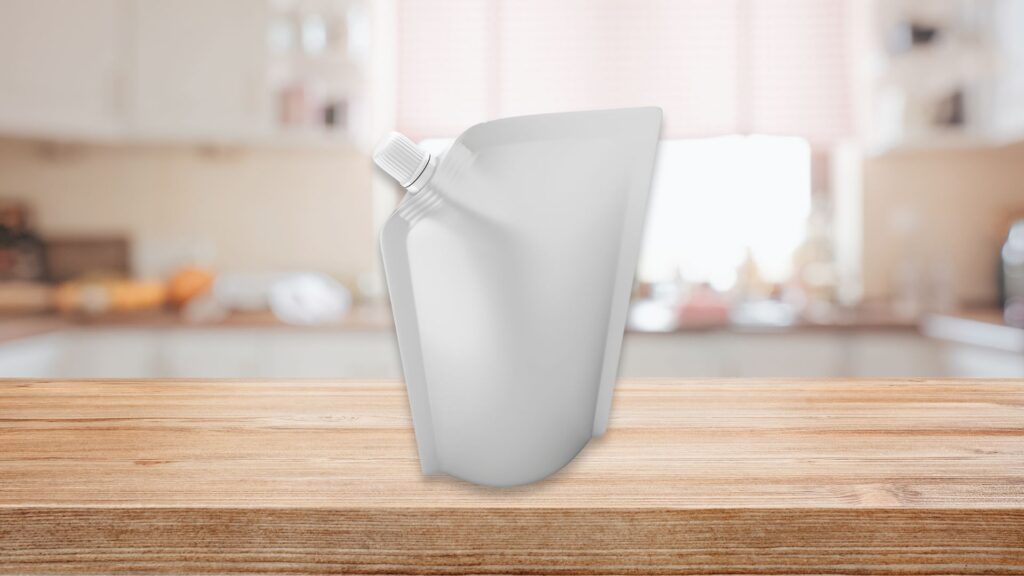In recent years, the idea of Reusable Packaging has become a global focus across industries, especially for liquid products, which require strict attention to cleanliness, safety, and product quality. Designing reusable liquid pouches with spouts is not merely about making the packaging thicker but involves a complete systemic approach from material structure and mechanical strength to the entire usage and cleaning cycle.
Reusable pouches must withstand pressure, heat, and repeated cleaning or sterilization cycles without losing their barrier properties or shape. Therefore, developing a reusable liquid pouch with spout begins with selecting suitable material structures, designing for multiple uses, and applying long-lasting sealing technology.
This approach not only extends the packaging’s life but also reduces plastic waste and carbon emissions from manufacturing new packages, enhances long-term cost efficiency, and maintains product consistency and safety with every reuse. It also represents the industry’s commitment to the Circular Economy, where every piece of packaging can regain value through safe and sustainable reuse.

Key Design Principles for Reusable Liquid Pouches with Spout
1. Material Structure: Designed for Cleaning and Sterilization
The heart of reusable packaging lies in its multi-layer film, where each layer serves a distinct function:
- Outer Layer: Provides strength and pressure resistance. Common materials include PET or PA (Nylon).
- Barrier Layer: Prevents oxygen, odor, and moisture transmission, typically made from EVOH (Ethylene Vinyl Alcohol).
- Sealant Layer: Used for sealing and direct liquid contact, often LLDPE or food-grade PE.
Important Note: For reusable applications, avoid PET/AL/PE or METPET/PE structures, as the aluminum or metallized layers degrade under heat and repeated washing.
2. Sufficient Thickness and Durability
Film thickness is crucial for reusability. A reusable liquid pouch with spout should have a minimum thickness of 100–150 microns to resist torsion, pressure, and liquid force without deforming.
The seal area must also be wider and denser than standard designs to prevent leakage after multiple washing and refilling cycles.
3. Specialized Cap and Refill Port Design
What makes reusable pouches different from standard pouches is the cap system (Refill Cap/Spout), which allows repeated opening and closing without damaging the structure.
Recommended features include:
- Screw Cap or Flip-top Cap that tightly seals against liquid pressure.
- Leak-proof liner inside the cap to maintain hygiene and prevent air ingress.
- For industrial or cosmetic applications, the refill port should be compatible with Refill Stations or Automatic Refill Systems for efficient refilling.
4. Cleaning and Sterilization System Integration
Designing for reusability goes beyond choosing materials; it also includes cleanability. To ensure hygienic reuse, pouches must:
- Use materials resistant to at least 80°C for hot-water washing.
- Have smooth internal surfaces with no deep folds or creases to prevent bacterial buildup.
- Undergo testing with CIP (Clean-in-Place) or high-pressure washing systems to ensure complete cleaning coverage.
5. Traceability and Reuse Tracking System
To ensure safety and quality control in industrial reuse, pouches should include traceability systems such as:
- QR codes or serial numbers to track reuse cycles.
- Production and reuse dates for accurate recordkeeping.
- Pre-use inspection protocols to identify and eliminate pouches with leaks or seal damage.
This traceability builds confidence among manufacturers and consumers that every reused pouch meets strict quality standards.

Standard Testing for Reusable Liquid Pouches with Spout
Testing is a crucial step to verify that reusable pouches can maintain physical integrity and product safety throughout their lifecycle. Multiple standardized tests simulate real-world conditions such as washing, refilling, transportation, and storage to ensure safe reuse.
Below are the key international testing standards applied in the liquid pouch industry:
1. Drop Test
Tests the pouch’s impact resistance by dropping it vertically from 1 meter (according to ASTM D5276 or ISO 4180).
The pouch must not leak, split, or tear after at least five drops, ensuring structural durability.
2. Seal Strength Test
Measured using ASTM F88 standards to evaluate seal strength.
Reusable pouches should maintain 30–40 N/15 mm minimum seal strength after 10 cycles of hot-water washing to guarantee consistent sealing integrity.
3. Oxygen Transmission Rate (OTR)
Evaluated using ASTM D3985 to measure oxygen barrier performance after multiple reuses.
The OTR value should not increase more than 10–15% from the initial reading, ensuring the preservation of liquids such as detergents, shampoos, or sauces.
4. Water Vapor Transmission Rate (WVTR)
Measures moisture barrier performance after repeated washing and drying.
The WVTR change should remain below 20% compared to the initial test to prevent moisture absorption that can alter product aroma or quality.
5. Reuse Cycle Test
Simulates 10–20 continuous wash, refill, and seal cycles using 80°C hot water and food-grade detergents.
After each cycle, the following factors are examined:
- Changes in film color or surface dullness.
- Structural stability of seals and caps.
- Barrier layer density (measured with a Gas Permeation Analyzer).
Pouches that maintain performance for 5, 10, or 20 cycles without quality loss are certified as reusable under industrial standards.
6. Microbial Residue Test
After repeated cleaning and sterilization, the inner surface of the pouch is sampled to detect bacterial or fungal residues.
According to ISO 11737-1, compliant pouches must show no microbial growth, ensuring hygienic safety before refilling.
HOEI’s Liquid Pouch with Spout: Applying the Reusability Concept
True design for reuse requires in-depth understanding of materials, structure, and system functionality. A well-designed pouch must withstand pressure, heat, and cleaning without compromising quality.
HOEI’s liquid pouch with spout embodies the Design for Reuse concept from the start, constructed with multi-layer films that balance strength, barrier protection, and recyclability. Each pouch undergoes international-standard testing for tensile strength and seal integrity to ensure long-term reusability in industrial applications.This approach reflects HOEI’s commitment to creating sustainable, safe, and circular packaging that helps manufacturers reduce waste, enhance product quality, and build long-term consumer trust.
